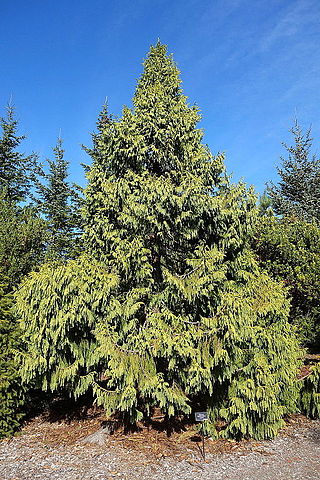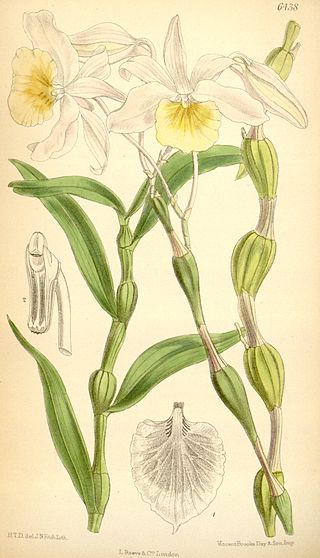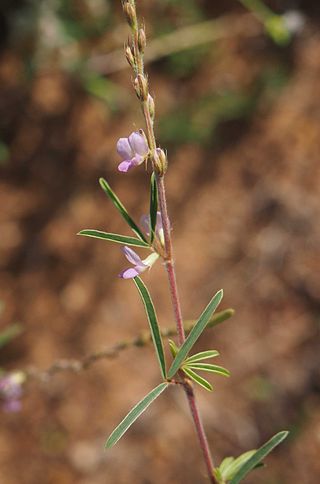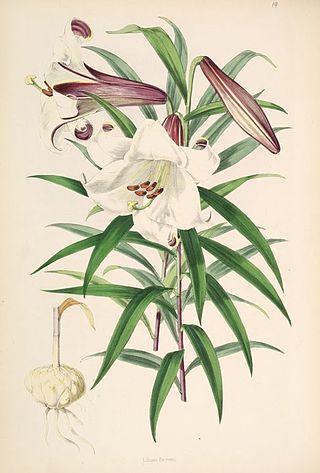Taxodiaceae is a formerly recognized conifer family. It is today recognised as a paraphyletic grade of basal lineages within the Cupressaceae. It contains the following living genera:

The Alishan National Scenic Area is a mountain resort and nature reserve located in Alishan township, Chiayi County, Taiwan.

Taiwania, with the single living species Taiwania cryptomerioides, is a large coniferous tree in the cypress family Cupressaceae.

Odontochilus is a small genus from the orchid family (Orchidaceae). These terrestrial, mycoparasitic orchids occur from China, Japan, the Himalayas, Southeast Asia, New Guinea and Melanesia. The genus is related to Gonatostylis, endemic to New Caledonia.

Bunzō Hayata was a Japanese botanist noted for his taxonomic work in Japan and Formosa, present day Taiwan.
The National Center for High-Performance Computing (NCHC; Chinese: 國家高速網路與計算中心; pinyin: Guójiā Gāosù Wǎnglù Yǔ Jìsuàn Zhōngxīn) is one of ten national-level research laboratories under National Applied Research Laboratories (NARL), headquartered at Hsinchu Science and Industrial Park, Hsinchu City, Taiwan. The NCHC is Taiwan's primary facility for high performance computing (HPC) resources including large-scale computational science and engineering, cluster and grid computing, middleware development, visualization and virtual reality, data storage, networking, and HPC-related training. The NCHC is also responsible for the operation of the 20 Gbit/s Taiwan Advanced Research and Education Network (TWAREN), the national education and research network of Taiwan. The NCHC supports academia and industry with hardware and software, advanced research and application development, and professional training. Its Free Software Lab developed and maintains the free disk cloning utility Clonezilla.

Vanilla somae is a species of Vanilla native to the forests of Taiwan, northern Vietnam and Laos. The scientific names Vanilla albida and Vanilla griffithii are sometimes misapplied to this species, but they are actually three different species.

The Northern Triangle temperate forests is a temperate broadleaf and mixed forest ecoregion of thick forest covering the mountains of northern Myanmar.

The Arboretum de Villardebelle is an arboretum specializing in conifers located in Villardebelle, Aude, Languedoc-Roussillon, France.

Dendrobium findlayanum, Findlay's dendrobium, is a species of orchid. It is native to Indochina and to the Yunnan region of China.

Aphyllodium is a genus of flowering plants in the legume family, Fabaceae. It belongs to the subfamily Faboideae. Members of the genus are found in various parts of Australia, South Asia, Southeastern Asia, and south China.
Flora of China is a scientific publication aimed at describing the plants native to China.

Agapetes is a semi-climbing shrub genus native to the Himalayas, grown as an ornamental for its attractive pendulous bunches of red tubular flowers blooming over a long period. It is mostly grown in climates from cool temperate to sub-tropical. Propagation is from cuttings. Agapetes has 245 species and 147 are accepted out of 245.

Tylopilus neofelleus is a bolete fungus found in Sichuan and Yunnan provinces of China, Taiwan, Japan, and New Guinea. It is similar in appearance to Tylopilus felleus, but is distinguishable from that species by its smaller spores.

Wu Rong-i is a Taiwanese politician. Wu was the Vice Premier in 2005–2006., and now serves as senior advisor to Tsai Ing-wen, current President of Taiwan, and as Chairman of Taiwania Capital Management Corporation, the investment arm of Taiwan.

The Guizhou Plateau broadleaf and mixed forests are a subtropical moist broadleaf forest ecoregion in the Yungui Plateau of China. Much of the original forest has been replaced by secondary forests.

Taiwania is a supercomputer series in Taiwan owned by the National Applied Research Laboratories.

Lilium brownii is a species of lily native to Mainland China, Hong Kong, Kinmen and Matsu Islands as well as northern and central Vietnam and Kachin of Myanmar. Its common names include Hong Kong lily and Brown's lily.

Taiwania 3 is one of the supercomputers made by Taiwan, and also the newest one. It is placed in the National Center for High-performance Computing of NARLabs. There are 50,400 cores in total with 900 nodes, using Intel Xeon Platinum 8280 2.4 GHz CPU and using CentOS as Operating System. It is an open access for public supercomputer. It is currently open access to scientists and more to do specific research after get permission from Taiwan's National Center for High-performance Computing. This is the third supercomputer of the Taiwania series. It uses CentOS x86_64 7.8 as its system operator and Slurm Workload Manager as workflow manager to ensure better performance. Taiwania 3 uses InfiniBand HDR100 100Gbit/s high speed Internet connection to ensure better performance of the supercomputer. The main memory capability is 192GB. There's currently two Intel Xeon Platinum 8280 2.4 GHz CPU inside each node. The full calculation capability is 2.7PFLOPS. It is launched into operation in November 2020 before schedule due to the needed for COVID-19. It is currently ranked number 227 on Top 500 list of June, 2021 and number 80 on Green 500 list. It is manufactured by Quanta Computer, Taiwan Fixed Network, and ASUS Cloud.

Bulbophyllum sect. Hirtula is a section of the genus Bulbophyllum.















